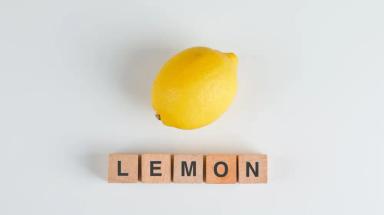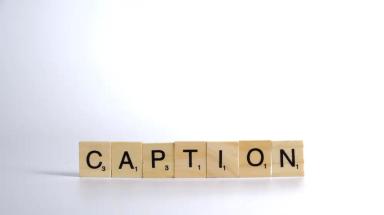Summary
Transcription is the process of conveying audible content into written content. It is a very important service that is being used everywhere in the world since it has many benefits. Transcription is handled by professional transcriptionists who are able to accurately accomplish this task with no minor mistakes.
Get our transcription services now
Here are the most frequently asked questions about transcription
What does transcription mean?
Transcription means transforming spoken content into written text. Transcription is usually done for audios, videos, movies, and series, and it can be done no matter the field including general, life sciences, financial, economic, medical, legal, psychology, business, technical, literature, entertainment, gaming, commercial, IT, administrative, judicial, multimedia, engineering, advertising and marketing, and more. Transcription can be useful for videos about certain training, documentaries, tutorials, guidelines, and other content.
Get our audio transcription services now
How do transcription and translation work?
Transcription is the process of transforming any spoken content into written and visual content. A transcriptionist should have a linguistic background to know how to write properly without grammar or spelling mistakes. Whereas translation is the process of transforming any content into another language.
This task is usually done by a translator who knows all about the differences between the languages he/she is working on. The translator is called to know how to deal with different cultural backgrounds and should aim at conveying the right meaning in one or more languages.
The transcription process is often followed by the translation process which is here called subtitling, and it means translating the transcripted content into another language.
Get our video transcription services now
Why is transcription important?
Transcription is very important for many reasons, and it can be often used by nearly everyone. It first aims at having the written meaning of spoken content which helps people stay more focused because some might not always be able to stay focused on spoken content for a long period of time.
Transcription is also important for people who have hearing problems or the ones who are deaf. It helps them understand the content just like the other ones who don’t have similar problems. Moreover, it is very important for non-native speakers or the ones who want to learn the language but struggle with understanding everything.
Native speakers tend to speak fast and it’s hard for others to fully understand what they’re saying if there is no written content at the same time. In addition to that, the transcription helps everyone watch anything no matter where they are, even if they are in a crowded environment.
Not to mention the important details that might be missed if not heard correctly, such as phone numbers, addresses, and other similar details. Transcription helps people hear or watch catch-all useful details.
Get our interpretation services now
What are the stages of transcription?
The transcription process doesn’t have many stages. It’s all about hearing the spoken content and converting it into a written one. However, many transcriptionists aim at having the best outcomes, so their typical transcription process looks as follows: They start by listening to the whole content. After the listening stage, they identify the field of the content. This helps them pay attention to homophones, especially in specialized fields.
Then, transcriptionists start playing the spoken content again but pause after every sentence to write it down. After all the spoken content is completely transformed into a written one, they read the content one last time to make sure they haven’t missed out on details. Some of them might even play the spoken content at the same time to ensure the timing of the written content is aligned with the spoken content. While going through it one last time, they also proofread the whole content and make sure it has no minor errors or mistakes. After everything is done, they deliver the work.
How to become a certified medical transcriptionist
What are the video transcript best practices?
To ensure a high-quality video transcription, there are a few practices and advice that make the whole difference. It is highly advised to get soundproof earphones or headphones to make sure to concentrate on what you are hearing without outer distractions.
Get a video transcription tool or software where you can add the written content and synchronize it with the spoken content. On a side note, having a stable and reliable internet connection goes a long way. It is also advised that you practice grammar and spelling to avoid related errors and mistakes.
Not to mention watching transcribed videos yourself to see how they write sounds, what they use when the speaker changes, and other similar information. Plus, you can start by watching the whole video at first and paying attention to everything that might help you while transcribing.
You can then start reading about the field of the video, and even conduct a small research about the terms and how they’re written once and for all, to avoid going back and forth while working.
Furthermore, you can read the written content separately once done, to make sure that you have covered everything, and that it makes sense. And lastly, you can watch the video and read the transcription you made at the same time, and make sure that the content is the same.
Uncovering the Story: A Complete Guide to Interview Transcription
How to become a certified transcriptionist?
To become a certified transcriptionist, there are a few tips you can take into consideration.
First, it’s better if you have a linguistic background such as a bachelor's degree or a specialization in translation, literature, journalism, or linguistics, because only then will your transcription be one hundred percent error-free in terms of grammar and spelling.
You can also have a background related to the field of spoken content. This helps you identify the right terms and the right spellings. Once you have one of the above-mentioned qualifications, you can start following the below tips. To become a certified transcriptionist, you must have/be:
-
Strong listening skills: Spoken content varies when it comes to length, quality, tone, accents, and content. A transcriptionist should be able to identify all sounds and words regardless of the condition. So he/she should have strong listening skills.
-
Attention to detail: In some cases, transcriptionists are asked to convert background voices and noises. They should therefore have close attention to details and sounds even if they were all heard all at once.
-
Research skills: When it comes to research skills, it’s more about having very good ones. For some, they might stick to their fields of expertise. However, the majority, work on various projects from all fields and types. Therefore, transcribers should have very good research skills to know all there is to know about jargon and the right spelling.
-
Patience: Transcription is a long process, and unlike popular beliefs, it isn’t as easy as it sounds. Transcriptionists might have to replay the same word, or sometimes, the same sentence, over and over again just to catch the right meaning. Therefore, transcriptionists are called to have patience, because it’s only by being patient that they will be able to cover all that was said.
-
Knowledge in grammar, spelling, capitalization, and punctuation: All that is being heard should be perfectly written without any minor mistakes regarding grammar and spelling. Transcribers are also called to pay attention to the use of punctuation because they might affect the meaning if they weren’t used right. Also, capitalization is fundamental when it comes to writing titles and names whatsoever.
-
Ability to meet deadlines: Just like any other job, transcribers are as well called to always deliver the work on time. No matter how tight the deadline was. A certified and professional transcriber is one who always meets deadlines.
Listen Up: Mastering the Best Way to Transcribe Audio
What is transcription in writing?
Transcription in writing means the process of making a visual option of the spoken content, whatever it was. Transcription in writing is writing all that was heard into a text that supports the spoken content.
What is the purpose of transcription and translation?
The purpose of transcription is to target all audiences such as those with hearing problems, deaf people, non-native speakers, language learners, and all other categories. Transcription makes it easier for everyone to keep up with the spoken material and pay attention to all important, and even minor details.
Translation, on the other hand, also aims at targeting more audiences, but the ones who don’t understand the source language of the content, whether it be an audio, a video, a movie, a text, an article, a blog, or anything else. What combines transcription and translation is subtitling, which is the translation of the transcription. Its purpose is to make the content accessible and understandable to everyone.
Get our copywriting services now
What are the transcription types?
There are typically 4 types of transcription. These types are used differently based on the customer’s purpose, needs, and demands.
-
Edited transcription: Edited transcription is when the final text is edited for more clarity and readability purposes. In this specific type of transcription, the text will be corrected from all grammar and spelling mistakes, as well as incomplete sentences, and slang. It makes the content sound more formal. However, an edited transcription might not be what you need if the content is already informal, such as autobiographies or personal stories, since the gist might get lost, and you might not get what you want.
-
Verbatim transcription: Verbatim transcription, often used in legal content, is the transcription of all noise details such as laughs, coughs, murmurs, verbal pauses, throat cleaning, and other similar noises.
-
Intelligent verbatim transcription: Intelligent verbatim transcription is editing all repeated words like hesitations, pauses, coughs, or distractors such as “yeah”, “you know”, and “hey” which might enhance the readability of the file. All by respecting the speaker’s words, and without omitting any other word that isn’t considered as additional.
-
Phonetic transcription: Phonetic transcription is when transcribers note phonetic pronunciations of some words for different reasons, such as the ones that might have changed over time for example. They add the phonetic symbols next to these words for the readers to know how they are correctly pronounced.
Medical Transcription: What Is It and Why Is It Important?
What are the transcription factors?
There typically are many factors a transcriber takes into consideration for setting a price and setting a deadline. These factors play a major part in the whole transcription process because they are what transcribers rely on to decide on many things. These factors include:
-
The number of speakers: The more the number of speakers, the harder it is for transcribers to identify them, especially in audio files. Therefore, more effort means more time and a higher price.
-
Length: The length of the audio, video, movie, or series plays a major part in identifying the details related to deadlines and price because transcribers usually charge by a minute of the spoken content.
-
Accent: The harder the accent, the harder the work for transcribers. Accents also affect deadlines and prices, because a common and popular accent is way easier than another one that is difficult to understand.
-
Comprehensibility: The more background noises and distractions, the harder it is for transcribers to understand the spoken content, the more time it will take, and the more it will cost if they charge per minute of their work.
-
Topics: The more diversified the topics are, the longer it will take transcribers to adapt and get in the picture. That’s another factor that affects transcription.
-
Sound quality: Some speakers might speak too low or too loud, and therefore transcribers will make an extra effort to hear and understand what is being said.
-
Edited, verbatim, intelligent verbatim, and phonetic transcription: The types of transcription also play a major part in setting deadlines and prices. Some of them take a lot more effort than others.
Get our transcription services now
What is verbatim transcription?
Verbatim transcription, also referred to as literal transcription, is a type of transcription that means the transcription of all noises that are being heard, such as laughs, clearing throats, coughs, sneezes, repetitions, interjections, interrupted words, stutters, colloquial languages, background noises, and distractors, and even pauses.
This type of transcription is typically used in legal matters and testimonies when every single detail is considered evidence and can help identify some lies or hidden information. Some examples of verbatim transcription include: “ohms, uh, yeah, like, hey, mhm, etc”.
What is academic transcription?
Academic transcription, as its name means, it’s the transcription of all the material related to academic learning and e-learning. Such as audio, videos, documentaries, lectures, research interviews, and everything else that falls under the category of schools, universities, or even learning academies and programs.
Get our academic translation services now
Why is reverse transcription important?
(It’s related to biology, not to writing).
(Reverse transcription and PCR/ RT-PCR allows the detection of RNA at low levels of gene expression and lays the basis for detecting circulating cancerous genes, RNA viruses, and RNA.)
Get our editing and proofreading services now
Is transcription a good job?
If you are a combination of/have a linguistic background, fast typist, good hearing skills, patience, strong attention to detail, great research skills, and computer and software skills, then you are the perfect match and you can make an ideal transcriber. It’s a very good source of income especially if you’re fast, on top of all that. It also makes good money and income if you are able to handle large transcribing projects in short periods of time.
How will Leaders Translation Company help you in transcription?
Transcription is handled by professional linguists who are able to accurately transform audible content into written content without leaving mistakes behind.. At Leaders, transcription projects are handled with care and by qualified transcriptionists who have similar experience in the field of content. Clients are guaranteed a high-quality outcome that is one hundred percent error-free.
Upload your file now and watch it seamlessly transform into any language of your choice!






